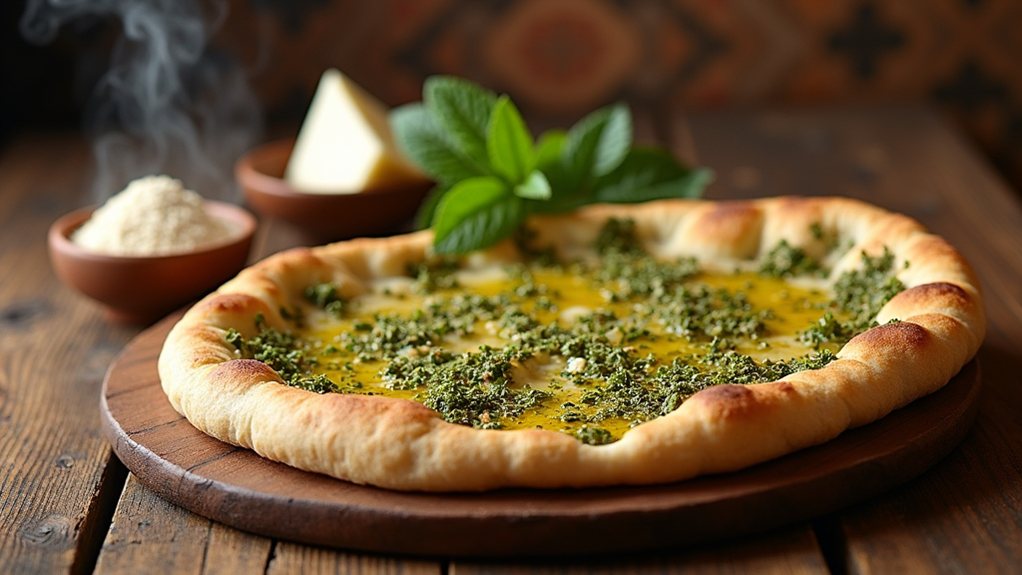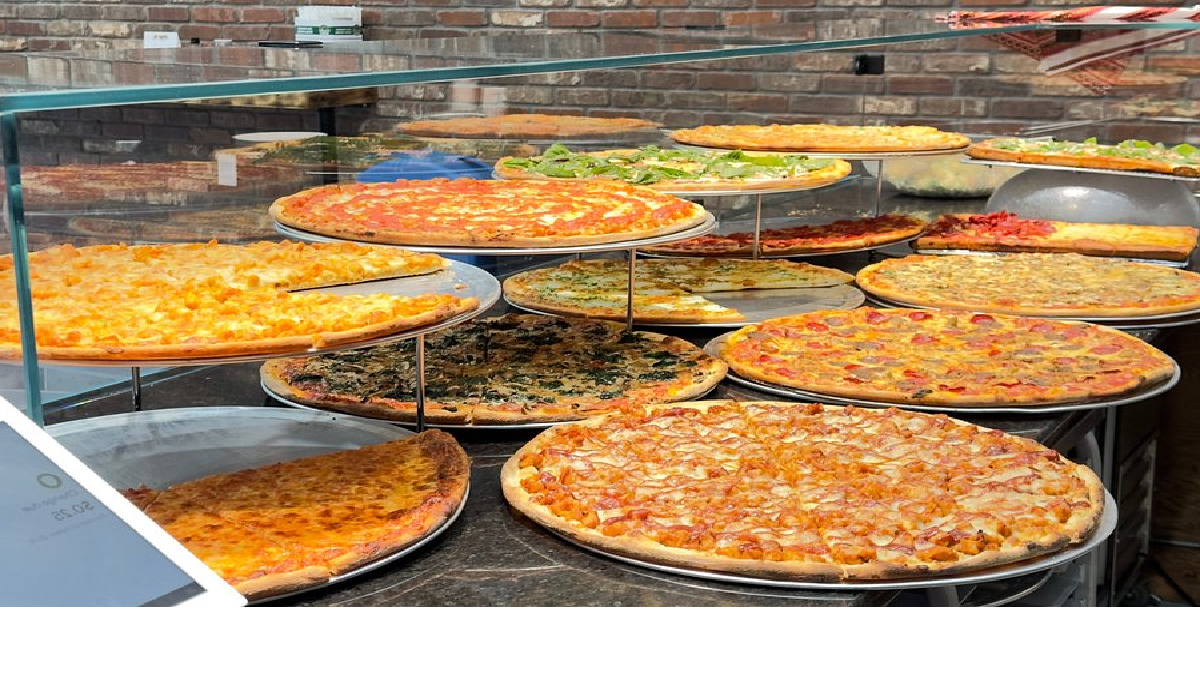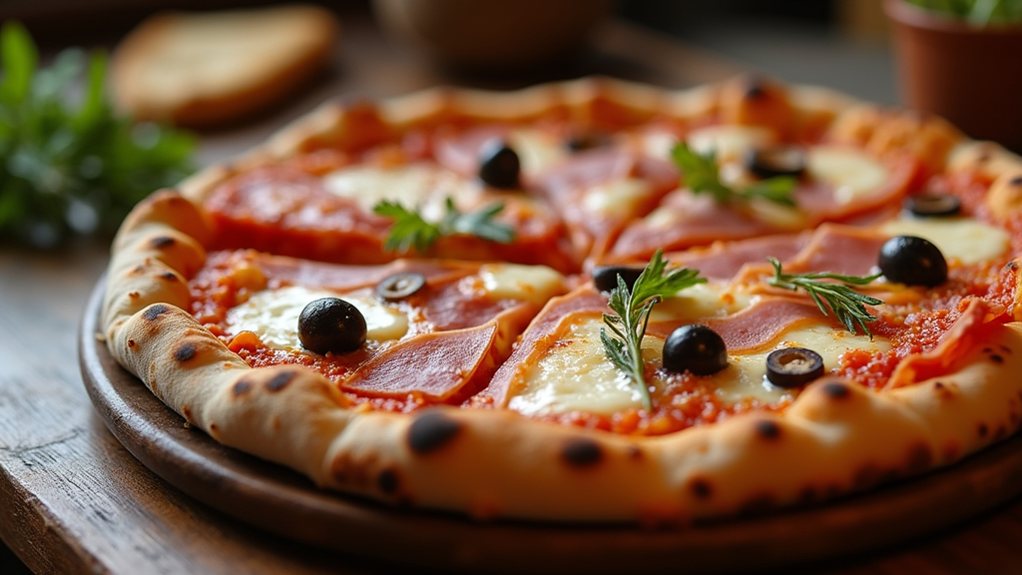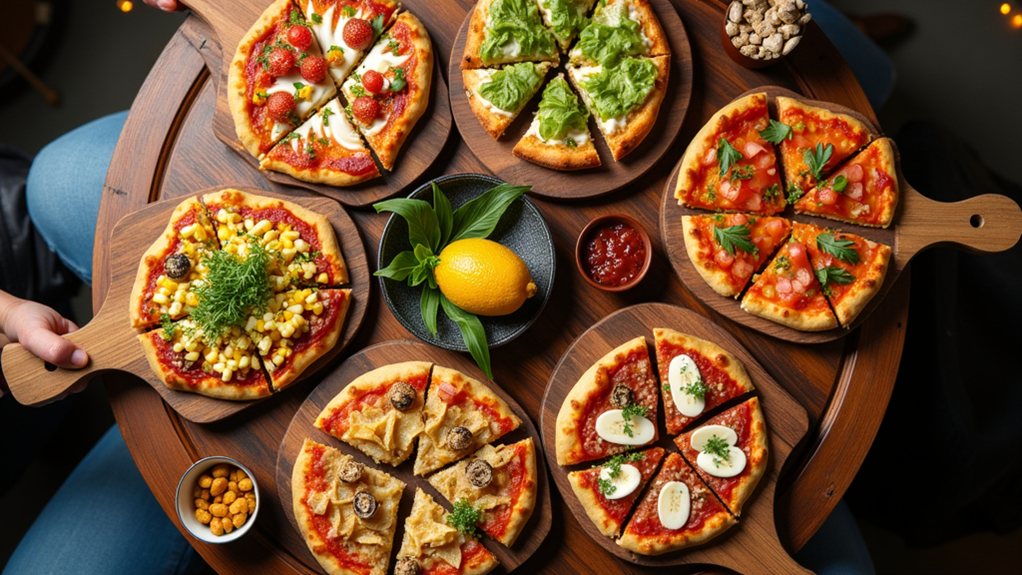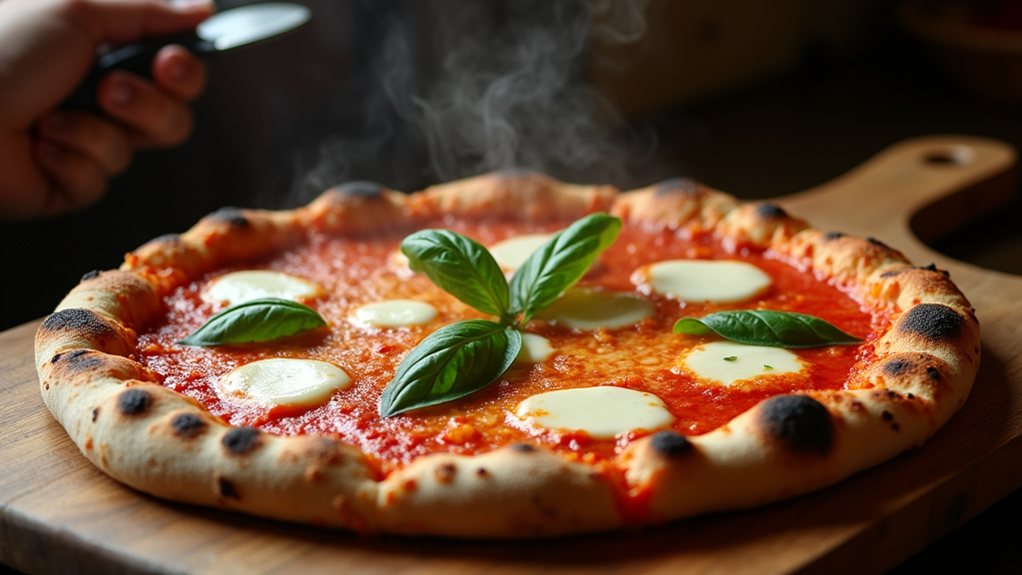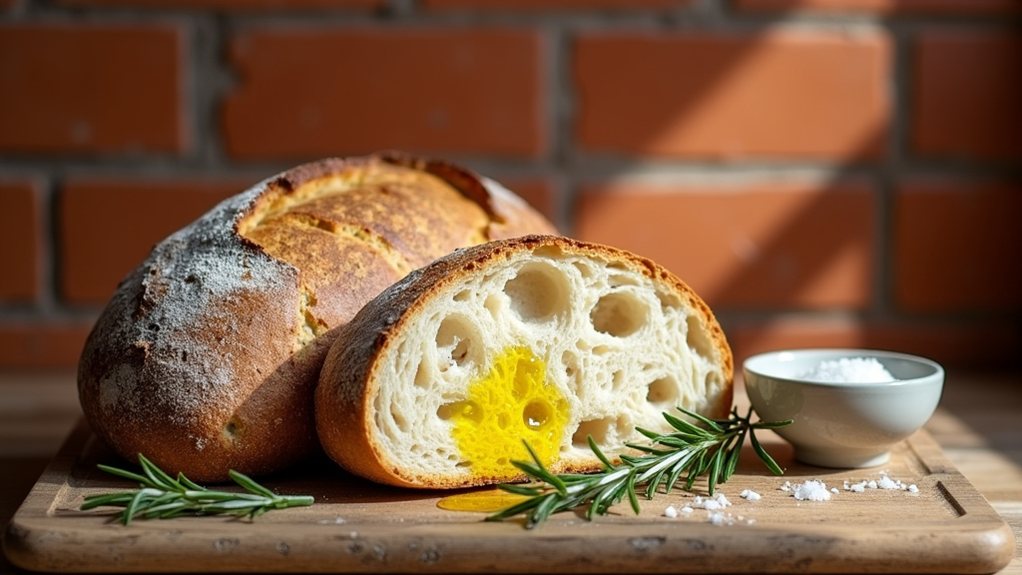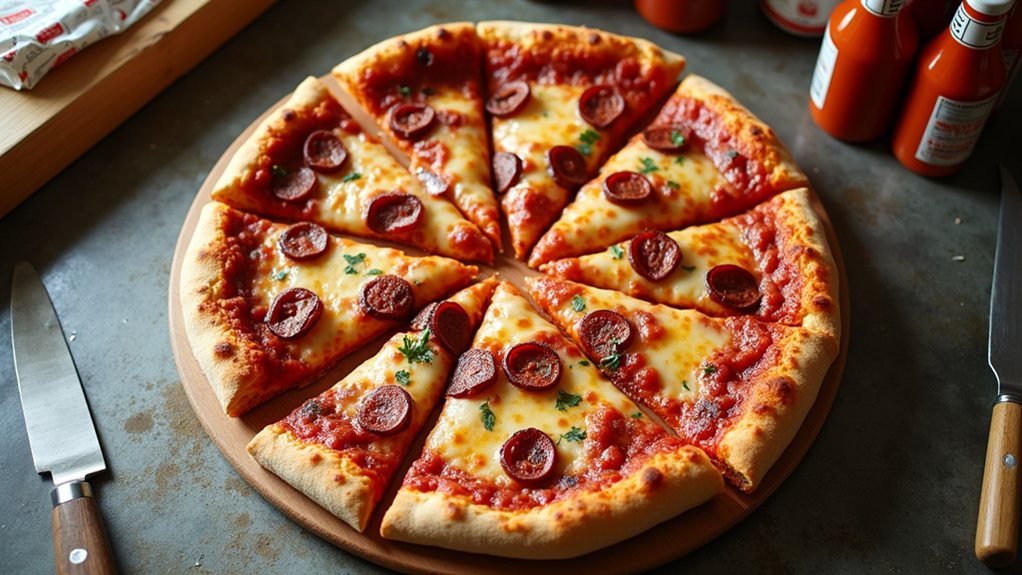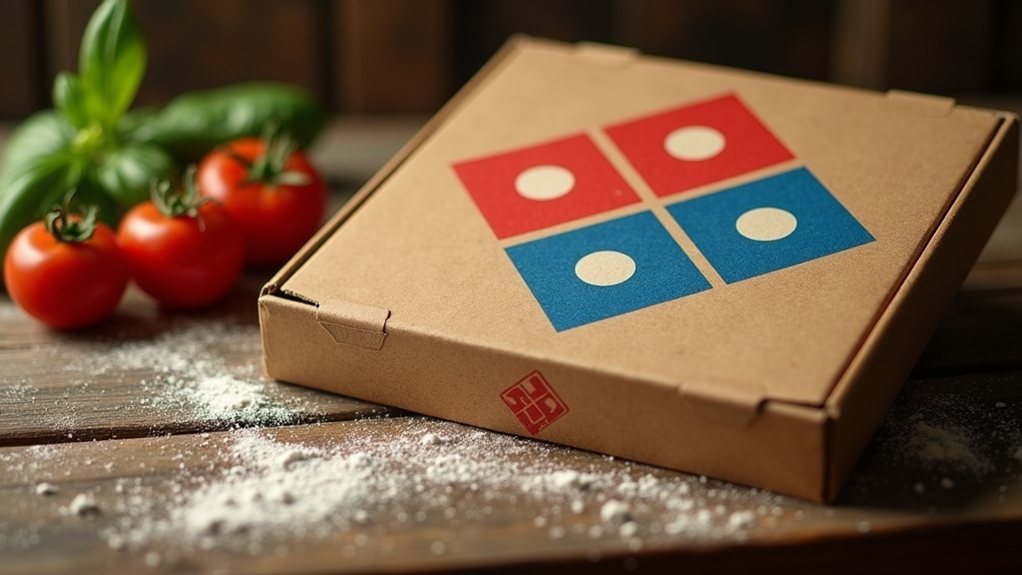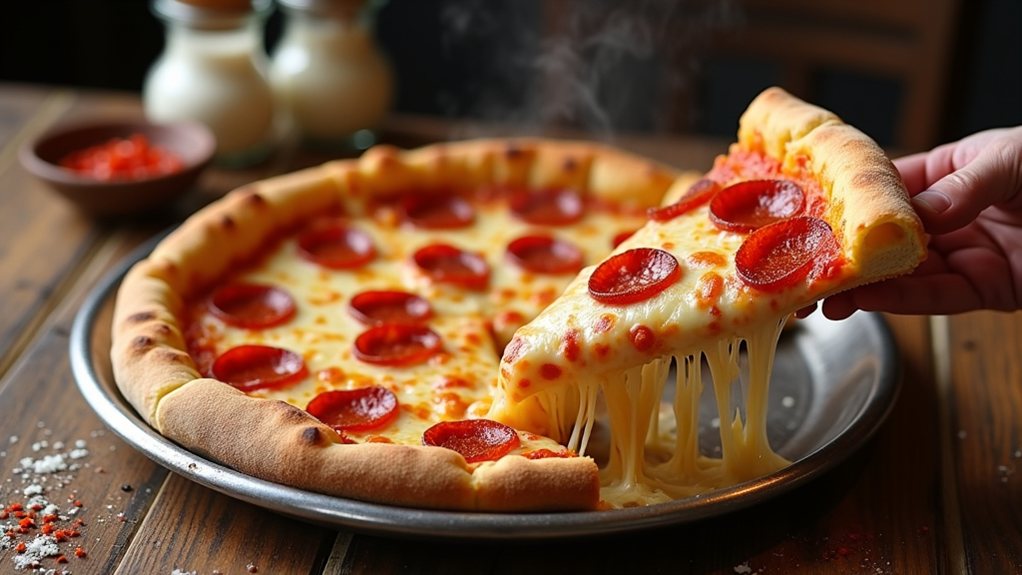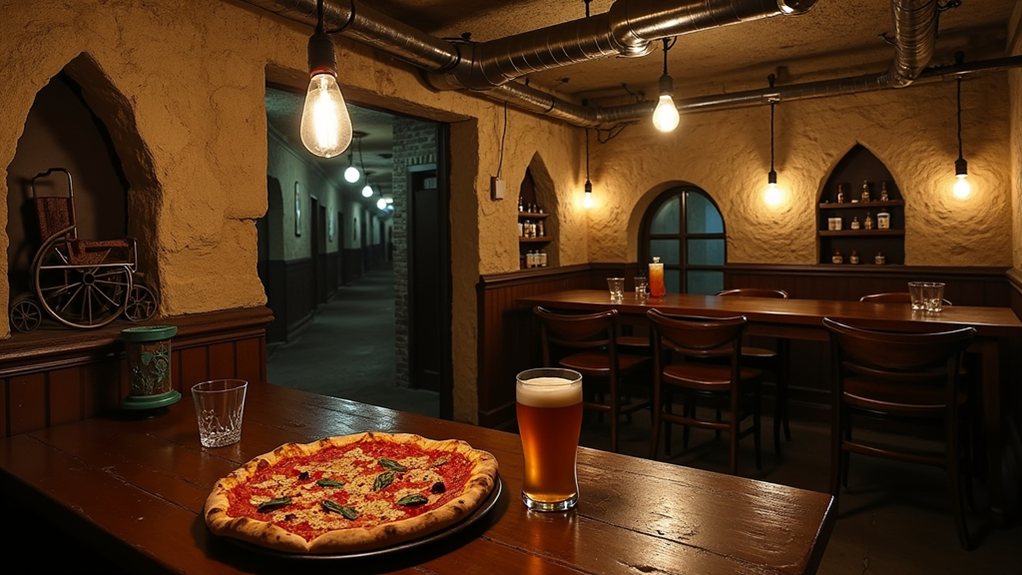Middle Eastern manakish offers food enthusiasts a tangy departure from traditional Italian pizza. This Levantine flatbread, dating back to ancient Phoenicia, features distinctive toppings like za'atar—a zesty blend of thyme, sumac, and sesame seeds. Its crisp, airy base provides the perfect canvas for these aromatic ingredients, making it suitable for any meal of the day. The contrast between manakish's herbaceous punch and pizza's creamy familiarity highlights how two seemingly similar dishes can represent entirely different culinary worlds.
The Ancient Origins of Manakish: From Phoenicia to Modern Tables
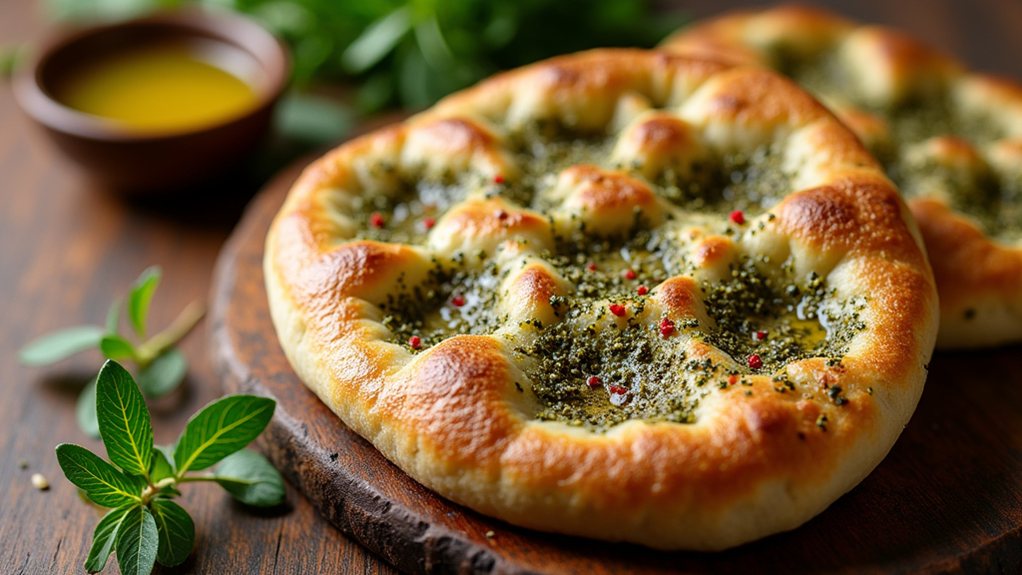
Three thousand years of Middle Eastern culinary history unfold in the story of manakish, a beloved flatbread whose origins trace back to ancient Phoenicia between 2500 BC and 539 BC.
This remarkable dish emerged in the Levant region, encompassing modern-day Lebanon, Syria, Palestine, and Jordan, where local women traditionally prepared the dough and baked it in communal ovens.
The name itself reveals its heritage, deriving from the Arabic word "manqūshah," meaning to engrave or carve—a reference to the distinctive dimples created to hold flavorful toppings.
Initially recorded in Arab cookbooks dating to the 10th century, manakish has maintained its cultural significance through centuries, eventually earning UNESCO recognition in 2023 as an Intangible Cultural Heritage element of Lebanon. The traditional process began with crushing wheat into flour using stone wheels before the dough could be prepared for baking.
While manakish shares some similarities with Neapolitan pizza in its flatbread foundation, it offers a distinctly different experience with its chewy texture and regional toppings.
Za'atar, Cheese, and Beyond: Exploring Traditional Toppings
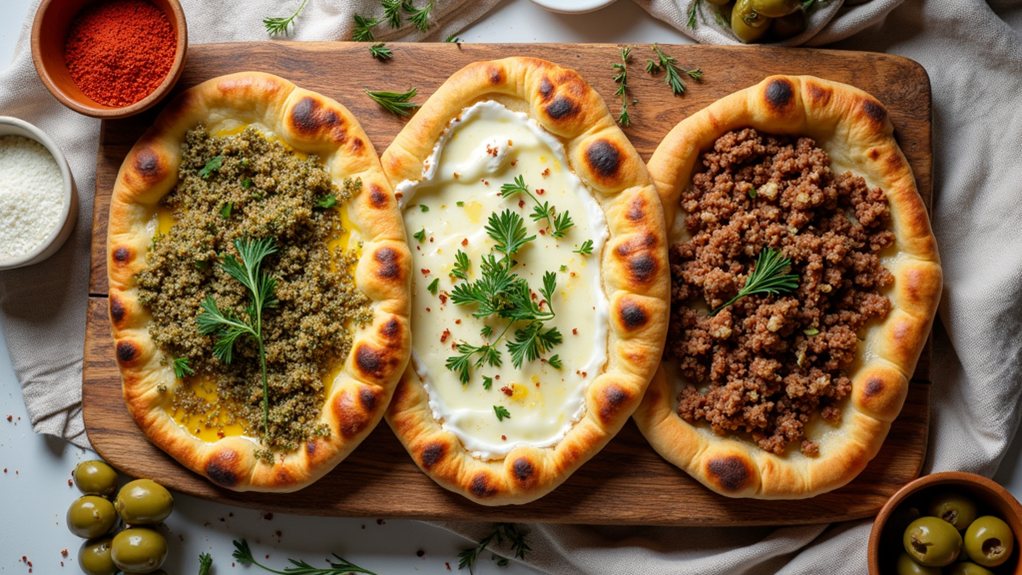
The artistry of manakish truly comes alive through its distinctive toppings, which have evolved alongside the flatbread's passage through history.
Za'atar, a fragrant blend of thyme, sesame seeds, sumac, and salt, remains the quintessential choice, offering herbaceous tanginess that has defined this dish for centuries.
Cheese varieties like Akkawi and Nabulsi provide savory contrast, while minced meat (lahm bi ajeen) transforms manakish into a heartier meal.
The regional palette expands further with spinach mixed with onion and sumac, or kishk, a fermented bulgur-yogurt mixture that delivers unique creaminess.
Modern interpretations have welcomed global influences, from California-style with goat cheese and avocado to vegan options featuring roasted vegetables, proving that manakish, like the cultures that cherish it, continues to adapt while honoring tradition.
Similar to traditional Italian pizza, these flatbreads serve as a versatile canvas for both classic and creative topping combinations.
Pairing tomato and olive toppings creates a delicious combination that balances juicy sweetness with briny tanginess.
The Art of Dough: Techniques for Perfect Manakish at Home
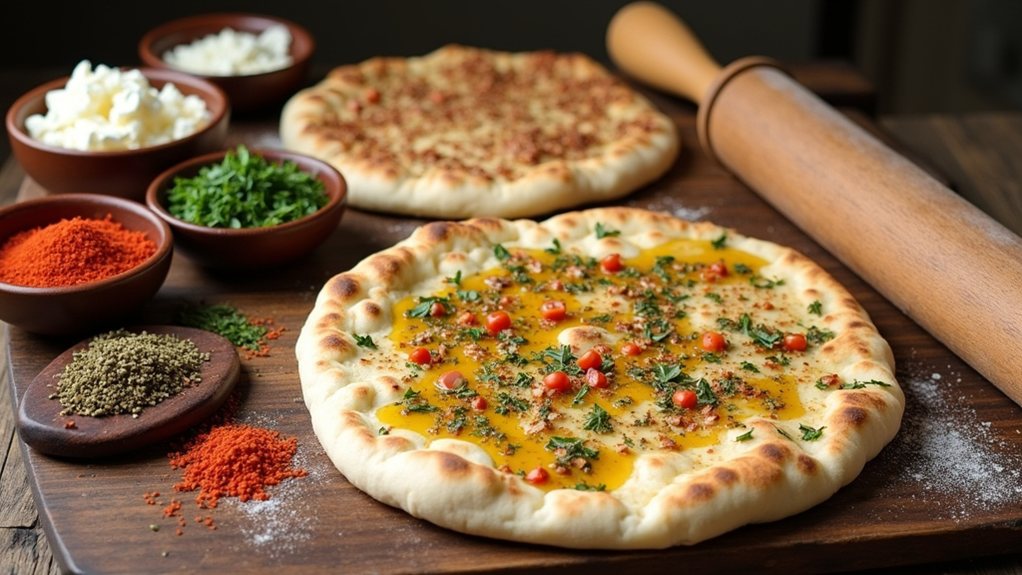
Crafting perfect manakish at home begins with mastering the foundational element of this beloved Middle Eastern flatbread: the dough. The basic recipe combines flour, yeast, sugar, salt, olive oil, and warm water, with whole wheat flour offering a denser alternative to all-purpose.
Activating the yeast properly in warm water with sugar for 5-10 minutes sets the stage for success.
Kneading, whether by hand or mixer for about 10 minutes, develops elasticity without making the dough tough or sticky. Be sure to knead on a well-floured surface to prevent sticking, similar to traditional pizza dough preparation. After kneading, the dough needs 30-60 minutes to rise in a warm, draft-free environment.
For beginners seeking a 10-minute dough, the recipe can be simplified with minimal kneading while still delivering excellent texture after the 30-minute rise.
Once risen, the dough is divided into balls, shaped into thin disks, and dimpled with fingertips to create pockets for toppings. Baked at temperatures between 375-450°F for 8-15 minutes, the result is a delicious canvas for traditional or personalized flavor combinations.
Why Manakish Rivals Italian Pizza: A Flavor Comparison
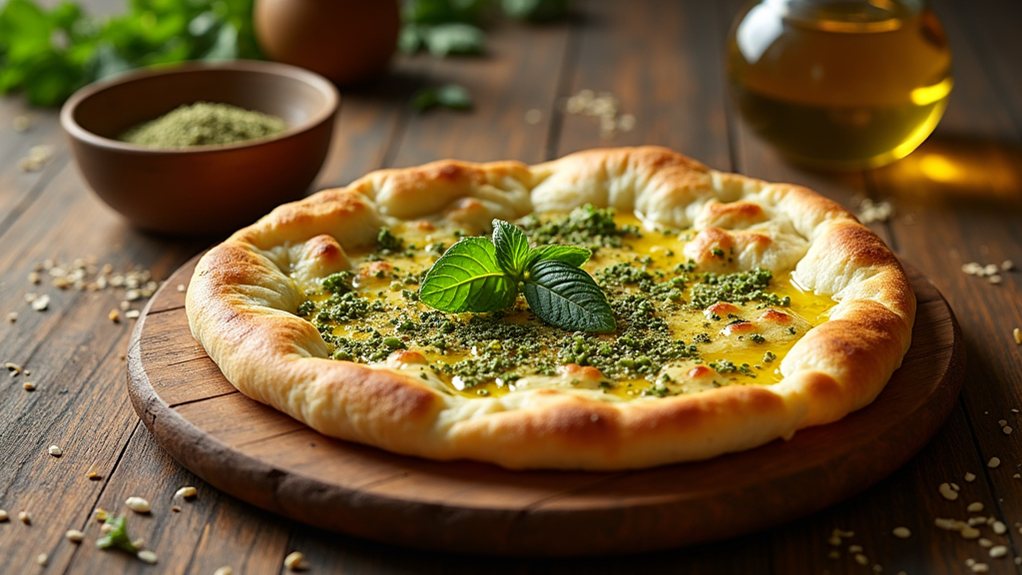
While both have achieved global recognition for their distinct flavors and cultural significance, manakish rivals Italian pizza through its distinctly aromatic profile and versatile preparation methods.
The Middle Eastern favorite features a lighter, crisper base compared to Italian pizza's heavier, sauce-laden profile. Manakish's signature zaatar topping, a blend of herbs, sumac, and sesame seeds, delivers a zesty punch that stands in delightful contrast to the rich, melted mozzarella of Italian pies.
Unlike Italian pizza's traditional dinner role, manakish seamlessly shifts between breakfast, snack, or side dish. Many home cooks appreciate manakish's simpler olive oil dough, which requires less rising time than traditional pizza bases.
Both culinary traditions bring their respective cultural heritages to the table, with manakish offering a freedom from convention that its Italian counterpart sometimes lacks.
From Breakfast to Dinner: Manakish's Versatility in Middle Eastern Cuisine
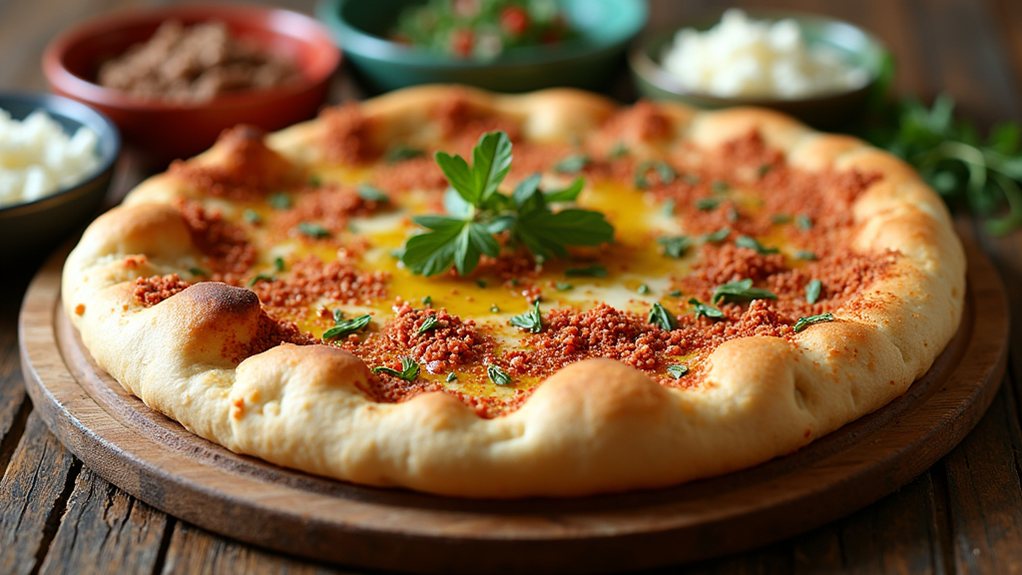
Beyond rivaling Italian pizza in flavor, manakish establishes itself as a cornerstone of Middle Eastern cuisine through its remarkable adaptability throughout the day. This Levantine flatbread shifts effortlessly from a morning staple topped with za'atar to a hearty dinner option featuring minced meat or sujuk.
The true freedom of manakish lies in its versatility, accommodating dietary preferences with ease. Gluten-sensitive individuals can enjoy versions made with alternative flours, while vegans might opt for plant-based cheese alternatives.
For families gathering around the table, manakish creates a communal experience where everyone customizes their portion. Whether paired with fattoush salad, served alongside mezze, or enjoyed with a simple cup of tea, manakish adapts to any mealtime context, carrying the rich traditions of Levantine hospitality throughout the day.
Finding Authentic Manakish: Where to Experience This Levantine Delight
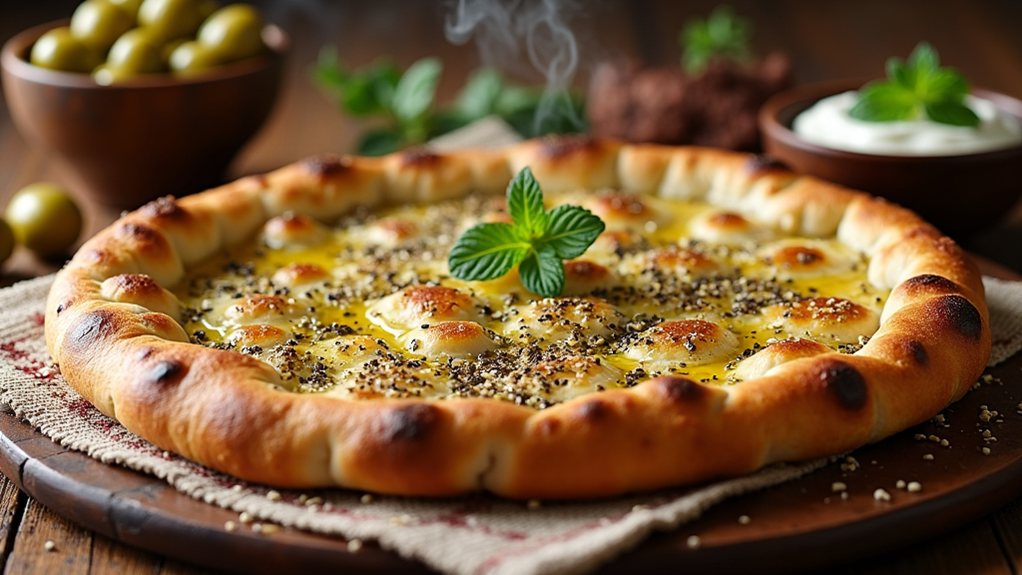
Uncovering authentic manakish often requires venturing beyond familiar culinary territories into specialized Levantine establishments where traditional methods remain intact.
Traditional Lebanese bakeries, known as "furuns," offer the most genuine experience, with flatbreads baked in communal ovens that impart distinctive flavor and texture. Restaurants like Zait & Zaatar serve manakish with traditional accompaniments such as mint tea and hummus, completing the cultural dining experience.
The centuries-old tradition of furuns elevates manakish beyond mere food to cultural artifact, where communal ovens and proper pairings preserve ancient flavors.
For those seeking the most authentic manakish experiences:
- Visit Middle Eastern neighborhoods where bakeries wrap hot manakish in paper, straight from stone ovens.
- Look for places that hand-stretch dough and press dimples before adding za'atar or cheese.
- Seek establishments where locals gather for morning meals, a sign of genuine Levantine culinary traditions.
FAQs
Is Manakish Suitable for Vegetarians and Vegans?
Manakish offers excellent options for vegetarians through zaatar, cheese, and vegetable toppings. Vegans can enjoy versions made with gluten-free dough, vegan cheese alternatives, and plant-based toppings.
How Long Does Homemade Manakish Stay Fresh?
Homemade manakish stays fresh for 2-3 days at room temperature, up to 7 days refrigerated, and can be frozen for 3 months. For ideal flavor and texture, consume immediately after baking.
Can Manakish Dough Be Prepared and Frozen Ahead?
Manakish dough can indeed be frozen for several weeks when properly wrapped. One can prepare it ahead, allowing for convenient baking whenever the desire for fresh bread strikes.
What Drinks Pair Best With Different Manakish Variations?
Traditional manakish varieties pair wonderfully with mint tea, Arabic coffee, or rosé wine, while innovative toppings complement craft beers, sparkling waters, and regional specialties like hibiscus tea or fruit-forward white wines.
How Has Manakish Influenced Other Regional Flatbreads?
Manakish has profoundly shaped regional flatbreads across the Levant, influencing preparation techniques, topping combinations, communal baking practices, and street food culture from Syria to Jordan through its distinctive herb and spice profiles.
